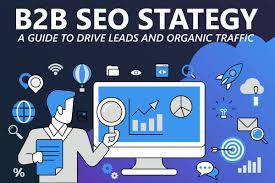Cash flow is the lifeblood of any business, and managing it effectively is crucial for sustainable growth. However, many businesses face cash flow gaps due to delayed payments from customers, which can hinder their operations and growth prospects. In such situations, invoice financing can be a valuable tool to bridge these cash flow gaps and keep the business running smoothly.
What is Invoice Financing?
Invoice financing, also known as accounts receivable financing, is a funding solution that allows businesses to unlock the cash tied up in their unpaid invoices. Instead of waiting for customers to pay their invoices on extended credit terms, businesses can sell their invoices to a third-party financing company at a discount. This provides immediate access to the funds they need to cover operational expenses, invest in growth opportunities, or simply maintain a healthy cash flow.
How Does Invoice Financing Work?
When a business opts for invoice financing, they submit their unpaid invoices to a financing company. The financing company then advances a percentage of the invoice value, typically around 80-85%, to the business upfront.
The finance company releases the remaining amount to the business once the customer pays the invoice, deducting a small fee for their services. This charge is often determined by the amount of the invoice and the length of time it takes the customer to pay the bill.
Types of Invoice Financing
- Factoring: In this arrangement, the financing company purchases the invoices outright, taking over the responsibility of collecting payments from the customers.
- Invoice Discounting: Unlike factoring, invoice discounting allows businesses to retain control over the collection of payments from their customers while using the invoices as collateral for the funding.
Benefits of Invoice Financing
- Improved Cash Flow: Businesses can increase their cash flow and fulfill their financial obligations without having to wait long by accessing funds held in unpaid invoices.
- Flexible and Fast: Invoice financing provides a quick and flexible funding solution, making it ideal for businesses that need immediate access to working capital.
- Growth Opportunities: With improved cash flow, businesses can take advantage of growth opportunities, such as expanding operations, investing in new equipment, or hiring additional staff.
- Risk Mitigation: Invoice financing can help businesses mitigate the risk of late payments or non-payment by transferring the credit risk to the financing company.
Risks and Drawbacks of Invoice Financing
While invoice financing offers numerous benefits, it’s important for businesses to be aware of the potential risks and drawbacks associated with this funding option. Some of the key considerations include:
- Cost of Financing: The fees associated with invoice financing can be relatively high compared to traditional forms of financing. Businesses should carefully assess the cost implications and compare them with the benefits of improved cash flow.
- Customer Perception: In some cases, customers may view the involvement of a financing company in the collection of payments as a negative signal. Clear communication and transparency are essential to mitigate any potential impact on customer relationships.
- Impact on Profit Margins: The discount or fee charged by the financing company can impact the business’s profit margins. Businesses need to evaluate the overall impact on their financial performance.
Comparing Invoice Financing with Traditional Bank Loans
A comparison between invoice financing and traditional bank loans can provide businesses with valuable insights into the advantages and limitations of each option. Key points of comparison may include:
- Speed of Funding: Invoice financing typically provides faster access to funds compared to the often lengthy approval process associated with bank loans.
- Collateral Requirements: While bank loans may require substantial collateral, invoice financing uses the unpaid invoices themselves as collateral, making it more accessible for businesses with limited assets.
- Cost Structure: Businesses can evaluate the total cost of financing, including interest rates, fees, and potential penalties, to determine the most cost-effective option for their specific cash flow needs.
Considerations Before Opting for Invoice Financing
Before deciding to use invoice financing, businesses should carefully consider the following factors:
- Cost: While invoice financing provides immediate access to funds, businesses should weigh the cost of the financing against the benefits gained from improved cash flow.
- Customer Relationships: Businesses should assess how their customers will perceive the involvement of a third-party financing company in the collection of payments. Open communication with customers is crucial to maintaining positive relationships.
- Eligibility: Not all invoices may be eligible for financing, and financing companies may have specific criteria regarding the creditworthiness of the business’s customers.
Conclusion
Invoice financing can be a game-changer for businesses facing cash flow gaps due to delayed payments. It’s like having a financial safety net that allows you to tap into the money you’ve already earned rather than waiting for it to trickle in at its own pace. However, like any financial decision, weighing the costs and potential impact on customer relationships is important before diving in.
Ultimately, when used wisely, invoice financing can be a powerful tool to keep your business running smoothly, seize growth opportunities, and navigate through the ups and downs of cash flow management. So, if you find yourself juggling unpaid invoices and struggling to keep the lights on, it might be worth exploring how invoice financing could be the cash flow solution you’ve been looking for.





